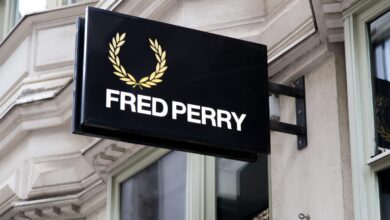Examining Dame Sharon White’s term as John Lewis chair
With John Lewis Partnership chair Sharon White announcing that she will be stepping down, Retail Sector analyses her time in the role

Register to get 1 more free article
Reveal the article below by registering for our email newsletter.
Want unlimited access? View Plans
Already have an account? Sign in
Current chair of the John Lewis Partnership Dame Sharon White has announced that she will be stepping down at the end of her term in February 2025, bringing to an end an eventful six-year term.
While the six-year stint will make her the shortest serving chair in its history,in her time in the role White has faced a number of of difficult and unprecedented issues including the Covid pandemic, the cost of living crisis, attempts to refresh and renew the brand and wavering support from the members of the John Lewis Partnership. Let’s take a look at how she coped.
The making of White
Before diving into the challenges White has faced in the role we must first look into how White got to where she is today.
She joined the civil service in 1989 where she worked for the Treasury and later for the British Embassy in Washington. She also worked at the 10 Downing Street policy unit during the Blair government, at the World Bank, and as a director general at the Department for International Development, the Ministry of Justice, and also at the Department for Work and Pensions.
At the Treasury, she supervised a review of the financial management of government and the Treasury’s management response to the international financial crisis of 2007–08. Following this, she was director general for public spending at the Treasury between 2012 and 2013. She was also the first black person to become a permanent secretary at the Treasury, and the second woman after Dame Anne Mueller in the 1980s.
Following this she became chief executive of Ofcom in March 2015 replacing Ed Richards as the previous chief executive and Steve Unger as the interim chief executive. In June 2019 it was then announced she would be leaving Ofcom to take up the role at John Lewis, officially starting her role on 4 February 2020.
The worst possible start
Straight away White was presented with a difficult job in front of her. John Lewis had just announced a wave of senior job cuts in October 2019 with a reduction of around 75 senior management head office roles from the current total of 225 as the John Lewis Partnership looked to run as one singular business.
Then just a month after starting White was faced with a set of results from the previous financial year as profits dropped 23%YOY. Falling profits would become a theme of White’s reign. In September 2020 the company posted a £635m pre-tax loss and £517m loss in March 2021. Following the losses the company cut staff bonuses for the first time since 1953.
The elephant in the room amongst all this is the covid pandemic. Within a month of starting her role White was having to try and navigate a completely unprecedented situation and the losses that followed were undoubtedly a result of this.
Changing the brand
Having successfully navigated through the pandemic while only losing 16 stores and posting record sales of £4.93bn in February 2022, White set about trying to refresh the brand as it looked to return to profitability.
In August 2022 John Lewis retired its “never knowingly undersold” motto which the company introduced in 1925. As part of this the company would refund customers the difference if they find the same item on sale elsewhere for a lower price within 28 days.
The scheme reportedly cost the retailer millions of pounds as it was forced to cut prices whenever a competitor held a sale. Furthermore the price promise did not apply to online-only retailers, while shoppers were increasingly buying online. The company did plan to invest £500m this year in lowering prices.
In the midst of this, the Partnership continued to see losses, posting a half year loss of £99m in September 2022 followed by full-year losses of £234m in March 2023. As a result of these losses the company cut staff bonuses again.
John Lewis stated that the impact of inflation was “felt across the business”, adding an extra £179m to its costs over the year. There was also a large exceptional cost in the period due to a write down in the value of Waitrose stores across its estate.
The point of no return?
The loss of bonuses may not have endeared White to members but in March of this year her relationship was increasingly tested when the Sunday Times reported that White was considering ending the 100% ownership of the company by members. The report said the company would only consider selling a minority stake in the business however, and that its priority would have been to maintain majority employee ownership.
The company has been 100% owned for more than 70 years, after it was put into a trust in 1950 by John Spedan Lewis, son of the group’s founder. Naturally this did not go down well with members. Ex-John Lewis boss Andy Street stated that it would be a “tragedy” should White go through with selling a stake. As of yet there has been no further movement on that front.
Loss of faith
All this talk led to the lowest point of White’s tenure when employees of the Partnership were given the opportunity to vote on White’s leadership of the company. In the end the members voted that they had no confidence in her leadership but did back her plans for the future.
Following this White announced a pledge to return the company to profit in 2026. To do this, the company has been innovative with its partnerships. For example, Waitrose has partnered with Deliveroo to offer delivery and the company has introduced 64 Gail’s Bakery’s into stores.
However, it remains to be seen whether the company can actually hit this goal or whether selling a minority stake in the company may be back on the cards. Either way it seems that White will not be seeing her turnaround plan through to its intended end.







